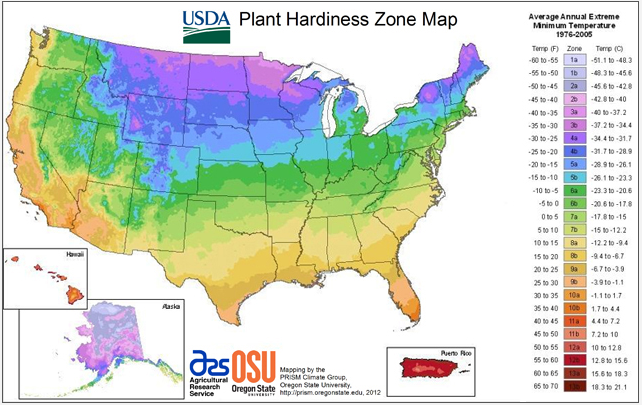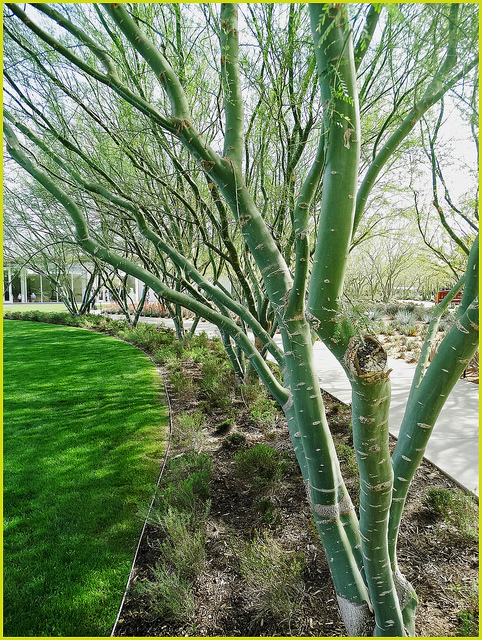Desert Trees

Trees that are adapted for the desert environment have special watering needs. Hot climate zones such as those higher than the USDA zone 8 classification have a limited number of trees that are useful for residential and commercial landscape purposes. Therefore, it is important to make the correct choice when selecting appropriate trees for these areas. Tree trimming of desert trees must be done at the right time of the year. If the tree trimming is done incorrectly it is easy to kill the tree because of the high desert temperatures. When this happens tree removal becomes necessary and added expenses and labor are incurred. The wrong tree choice will lead to the tree dying and the landscape company most likely replanting a tree on their own dime. It is usually the best practice to take critical notice of what trees are thriving in your area. Whether you live in the south of Texas with the famous Texas heat or areas such as the Sonora Desert in the Phoenix Arizona area there are trees that will thrive in these environments with proper care.
How to Plant Trees in the Desert
Most of the soil in a desert environment is sedimentary and may have a high content of clay. Most of these soils are highly alkaline also. When planting a young new tree whether it is your typical 15 gallon size or the larger box trees that come in a box ranging from 36 inches to 48 inches and even greater it is imperative that the soil be prepared well for the tree to survive the shock of transplanting in these harsher environments. Because of the severe heat in these areas with temperatures of 115 degrees in Arizona, plenty of water is necessary to establish the tree. Make note of the fact that often the soil does not drain well. It may be necessary to put some mixture of soil around the tree ball before planting it. Adding some nutrients is not a bad idea but make sure they are well mixed into the amended soil before placing the tree in the ground. The last thing you want to do is burn the roots of this newly transplanted tree. Also, make sure that before you back fill the hole completely you add water during the process and make sure there are no air pockets at the root ball and amended soil. The best way to accomplish this is to set the tree in the hole add some water then add some of the amended soil and some more water. Do this several times and the water will settle the amended soil around the root ball making sure there are no air pockets. Because of the added oil is not compacted as well as the surrounding undisturbed soil make sure to tamp around the root ball when you get to grade level and at each addition of soil. It is often a good idea to stake the tree to stabilize it from the high winds that occur in desert areas.
ball making sure there are no air pockets. Because of the added oil is not compacted as well as the surrounding undisturbed soil make sure to tamp around the root ball when you get to grade level and at each addition of soil. It is often a good idea to stake the tree to stabilize it from the high winds that occur in desert areas.
Watering Desert Trees
More water will be needed to be applied to the tree in its first year of life in the ground after transplanting than is years after the tree is well established. It is also necessary to make sure that the water goes deep enough into the ground to get to the tree root system. Never put the trees on the same irrigation zone az grass. Because of the short watering cycles that grass requires only the surface of the ground will absorb the water, perhaps to only a few inches of depth. This is nowhere near deep enough for the root system of the tree. Therefore, make sure, if possible, to put trees on their own drip zone and irrigate them for much longer periods of time but much less frequently than grass. It is very common in the Llndscapes around Phoenix and the suburbs like Mesa etc. to see shrubs and trees on the same irrigation zone. This can work but puts additional stress on the tree and the tree will not be as healthy as it can be. It is much better to add another zone or two specifically for watering the different types of trees. This way the trees can be watered 2 or 3 times a week for the first year on much longer cycles which insures water getting down to the new root system of the tree. Shrubs, on the other hand, need more frequent water than trees generally in the hot desert. Shrubs also have a much shallower root system so the duration of the watering cycle need not be as high as for trees. To add another zone of irrigation specific for the trees does not cost the landscape company that much more money for a typical residential landscape. In these type applications, trees and shrubs are near one another so the main supply lines can typically be placed in the same trench. So the incremental cost increases from the added materials and added labor to install the extra drip line or two for the trees. If you are a new homeowner and are having a landscape professionally installed or even doing it yourself pay the extra money to have the trees on their own drip system and you will reap the benefits for years to come.
Tree Trimming of Desert Trees
Never top a tree. This means not cutting the topmost branches of the tree canopy. The incredibly intense heat from the sun which occurs in the desert can easily kill a tree that has been topped. When tree trimming is necessary, make sure that you know what you are doing or you hire a certified Arborist who is skilled in keeping trees healthy. He will know exactly what to do to get the best results. Yes, you may save some money doing it yourself but if you are going to do a major tree trimming job on your trees it is best to leave it to the professionals. The risk is doing it wrong and killing the tree. Now it will be necessary to remove the tree and replant a new tree. A certified arborist at Mesa Trees in Mesa Arizona explains that tree trimming and removal in Mesa is a common occurrence even in the desert. Tree removal is no easy task and is back breaking work. Not only that but you will likely need to do what is called a stump grind to grind the remaining stump below grade and then cover it with rock or whatever you are using. These machines are expensive and hard to operate as well as they can be very dangerous. Another downside to this scenario is that you will not be able to plant another tree in the same location because of the remaining root ball below grade. So, if you have a beautiful tree providing shade to your property at just the right location make sure to keep it healthy and avoid a tree removal job. There are just too many negatives and downsides associated with not keeping your desert tree healthy.
Avoiding Tree Removal
To sum it all up we highly recommend the use of certified Arborist when it comes making decisions about your trees. Trees are a long-term benefit and a long-term investment. The payback of doing it right from the beginning is a beautiful tree providing much-needed shade in our hot desert environment. If not done properly then the expensive tree removal and excessive tree trimming are necessary. No one likes spending money on unnecessary expenses. Keep your trees healthy by trimming them in the correct manner and watering them sufficiently. Avoid having to remove the trees because they have died or are threatening your roof tops because of improperly trimmed branches and tree trimming.